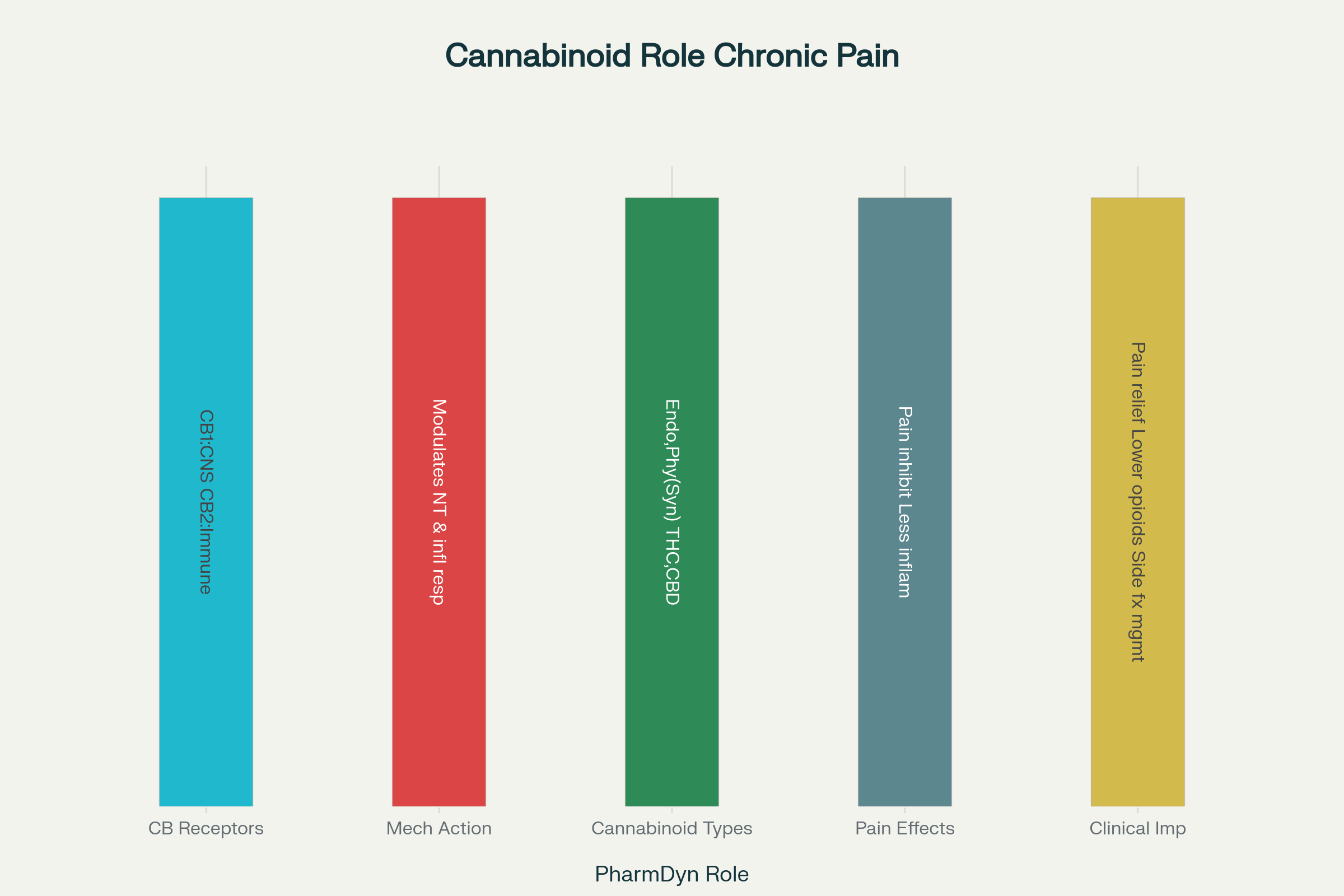Role of Cannabinoids in Chronic Pain Management: A Pharmacodynamic Perspective
DOI:
https://doi.org/10.64062/JPGMB.Vol1.Issue4.18Keywords:
Tetrahydrocannabinol, Cannabidiol, Chronic Pain, Methodological Heterogeneity, PharmacodynamicAbstract
Chronic pain has been shown to be a huge health burden worldwide with just about 20-30 per cent of the adult population being affected, greatly affecting their quality of life, day to day functioning and their mental health. The standard pain relievers involving opioids and non-steroidal anti-inflammatory drugs have their drawbacks to safety, tolerance and effectiveness over vast periods, hence requiring alternative agents. Cannabinoids, especially tetrahydrocannabinol (THC) and cannabidiol (CBD) have been found to offer great potential as therapeutic agents in their multimodal mode of pharmacodynamic action. This review summarises existing results regarding the pharmacodynamics of cannabinoids in pain management, noting that they exert central CB1 receptor-mediated nociceptive transmission blockade as well as peripheral CB2 receptor-mediated anti-inflammatory effects and influence of neurotransmitter systems such as the GABAergic, glutamatergic and opioid systems. There is evidence to show consistent efficacies in neuropathic pain and promising adjunctive effects on cancer pain, and occasional, but emerging areas of usage taking place in nociceptive pain. Nevertheless, obstacles exist with regards to the methodological heterogeneity, the dosage variability, the safety oriented cognitive and cardiovascular adverse effects and the pharmacodynamic variability caused by genetic polymorphism and drug interactions. Future directions in research need to be centred on further mechanistic research, large clinical trials of standardised dosing in larger populations and subtype specific delivery of medicine with pharmacogenetic profiling to study optimisation of medicine delivery to patients. Recognizing the pharmacodynamics of cannabinoids has key implications in the process of evidence-based incorporation of cannabinoids into clinical practice, in the enhancement of chronic pain control methods, and the creation of safe and effective cannabinoid-based pain relievers.




